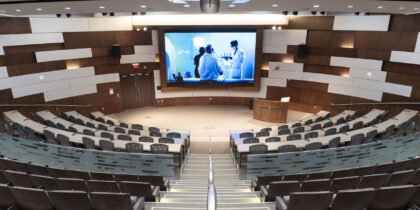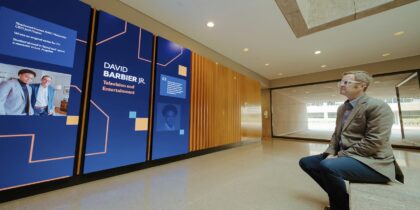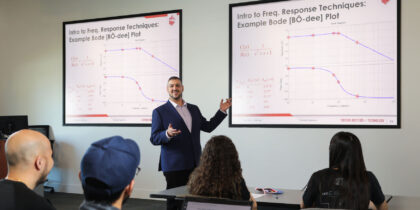The ability to work well with others as a team in order to make decisions and solve problems is the skill that companies most value among their new hires, according to a 2014 survey of hiring managers by the National Association of Colleges and Employers. And students at Liberty University in Lynchburg, Virginia are using a technology-based solution called Tidebreak to develop this skill by collaborating on class projects.
Challenges to Collaboration
“Regardless of what job they land when they graduate, students are going to have to work with other people at some point in their professional lives,” says Randall Dunn, an associate professor and chair of technology and innovation for Liberty University’s School of Education.
What’s more, social learning theory suggests that there are benefits to student collaboration. “What students can produce together is much stronger and much more beneficial than what they can produce by themselves,” he says.
For these reasons and others, educators in a growing number of classrooms are moving beyond traditional lecturing in favor of more active and collaborative approaches in which students work together to solve a problem or complete a task. But these types of activities can be challenging, Dunn says, because educators don’t always think through the steps that have to happen.
“We sometimes ask students to collaborate, but we don’t think through the process of having students working together,” he says. “What does that really look like? How are we going to enable this collaboration to occur?”
Facilitating Teamwork
That’s where Tidebreak comes in. It’s a software program that provides a virtual collaboration space in which students can share information and co-create new content interactively.
With this software, students can connect wirelessly to a shared display from a laptop, tablet or smartphone using any platform. They can share content and freely exchange ideas, while faculty can facilitate the experience easily. Students don’t just view information from different devices; they use their devices to engage with and transform content, leading to more active learning.
Students use their own devices to share real-time control of a common screen using uniquely identifiable cursors. Everyone can share materials within the group, such as files, websites or folders — and they can even copy and paste text from one device to another.
Dunn’s education students use the software to collaborate on group projects. In one example, he showed his students a video of a child with autism for a behavior management class, and he asked them to come up with an intervention strategy for this child’s unique behaviors. Students worked collaboratively in small groups of four to six people. They displayed their notes and supporting materials together on the screen, and everyone worked together to develop ideas and co-create a final presentation of their proposed strategy.
While there are other tools that can facilitate collaboration, such as Google Apps for Education, Tidebreak allows students to work together easily on a shared display. The Liberty University library has collaboration stations in which up to six students can sit at a table with a large display on which students can use the software to control the content.
“It creates this natural physical pod of collaboration,” Dunn says. “And once students are connected, it’s easy for them to rejoin later. You don’t have to worry about sharing a Google link with everyone and making sure they have permission. It removes many of the hurdles that exist when you’re trying to collaborate.”
Software and Displays
Samsung has partnered with Tidebreak to create a bundled solution that can further help with collaboration. Each bundle consists of Samsung large-format displays or e-boards paired with Tidebreak software.
Multiple versions of the software are available. ClassSpot is intended for use in traditional classroom layouts, with one or more displays at the front of the class and students participating from their seats. ClassSpot PBL is for team-based learning rooms in which teams of students are seated around LFD screens, with one or more large screens at the front of the room. TeamSpot is meant for huddle spaces or other small-group collaboration spaces.
Student collaboration is a key theme at ISTE 2016 in Denver, Colorado from June 26–29, and Samsung will be demonstrating its Tidebreak collaboration bundle at Booth 2500 in the Exhibit Hall.







